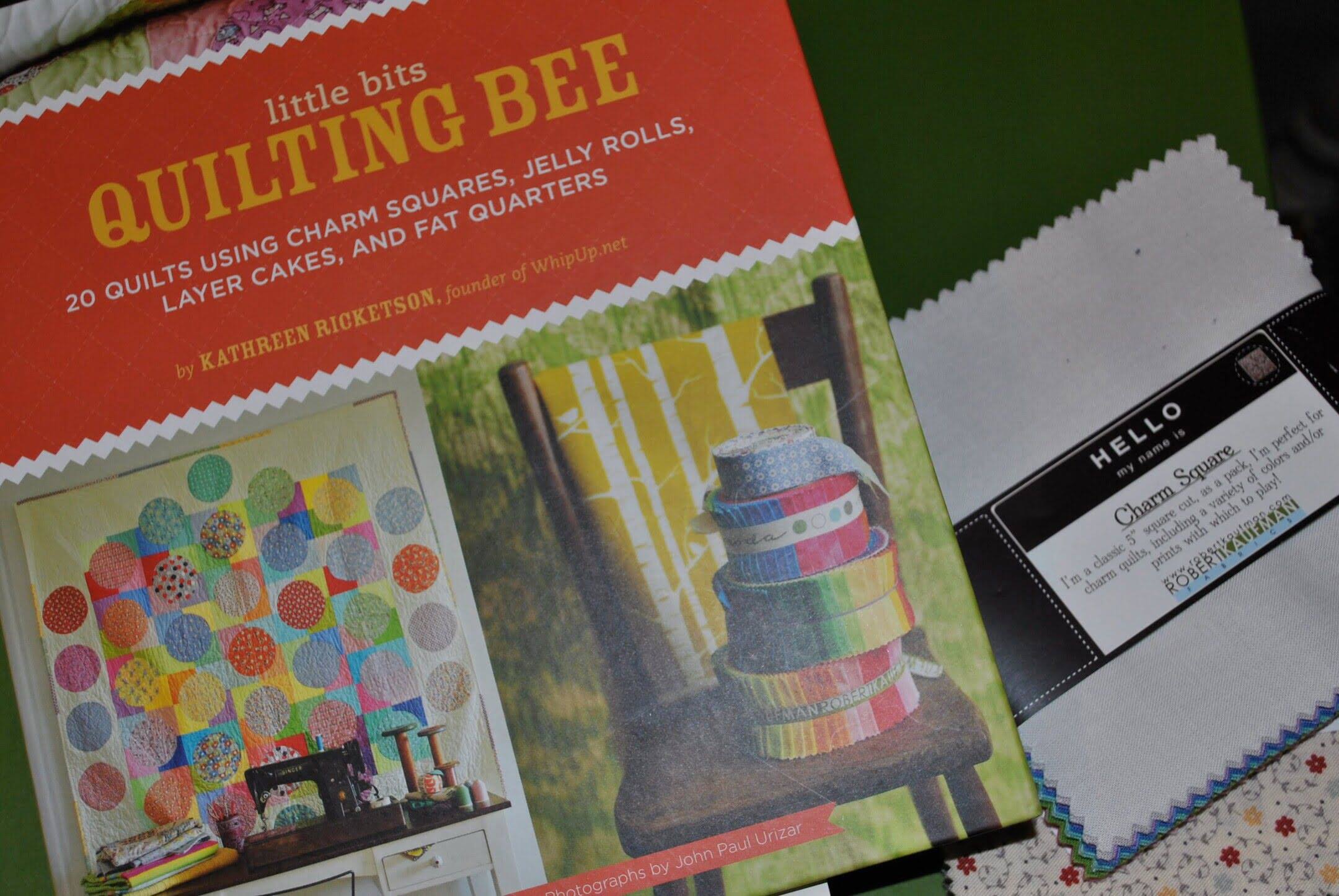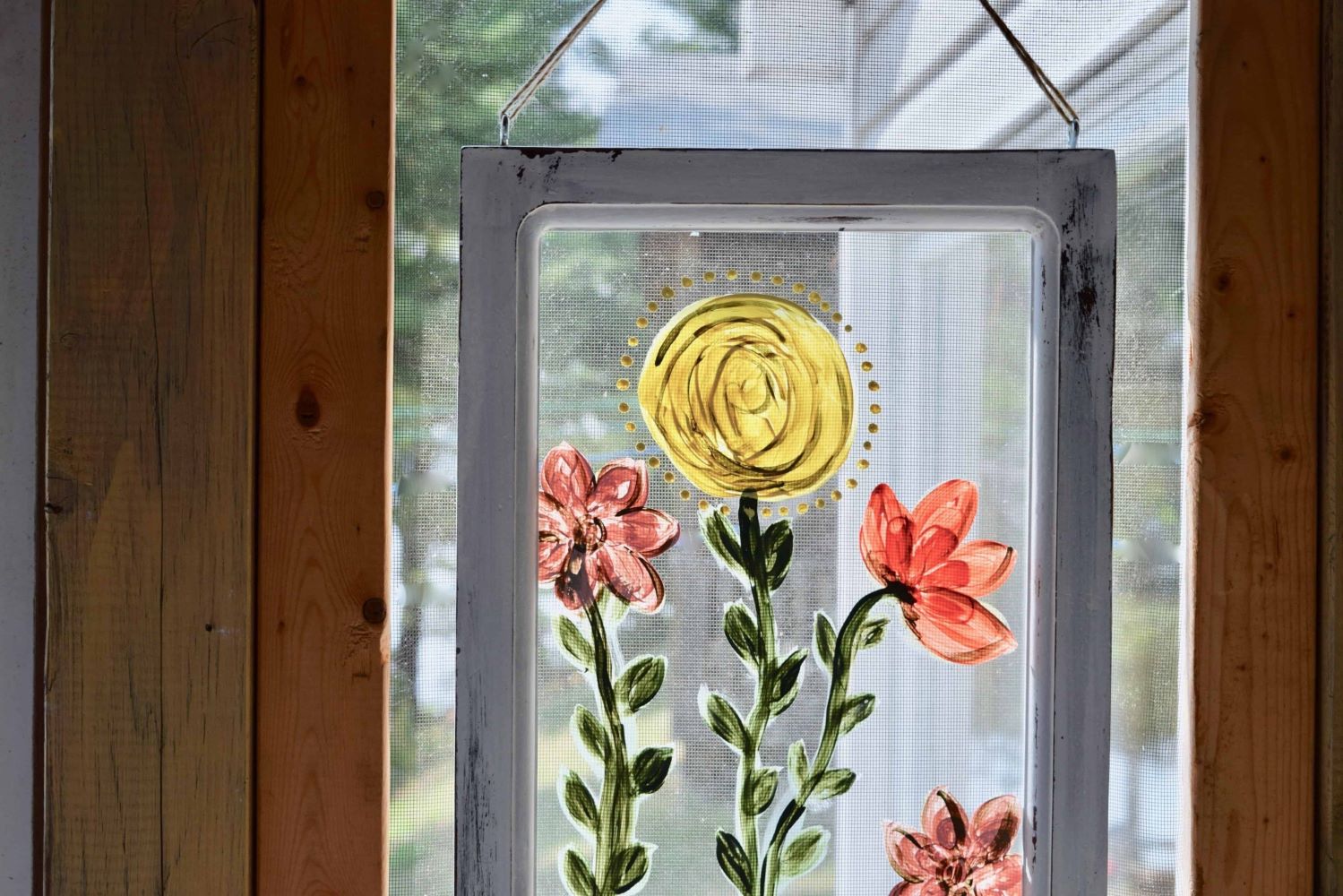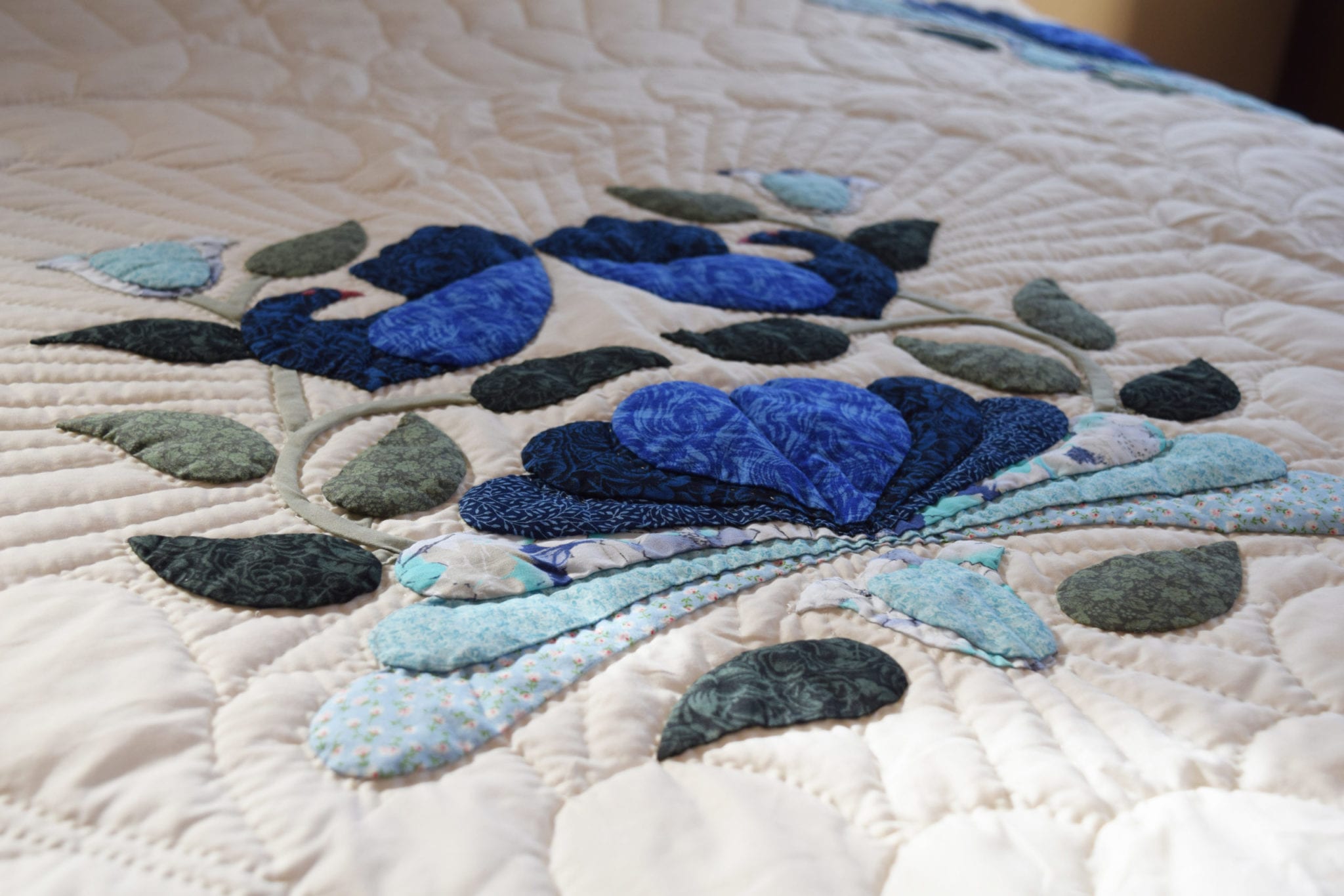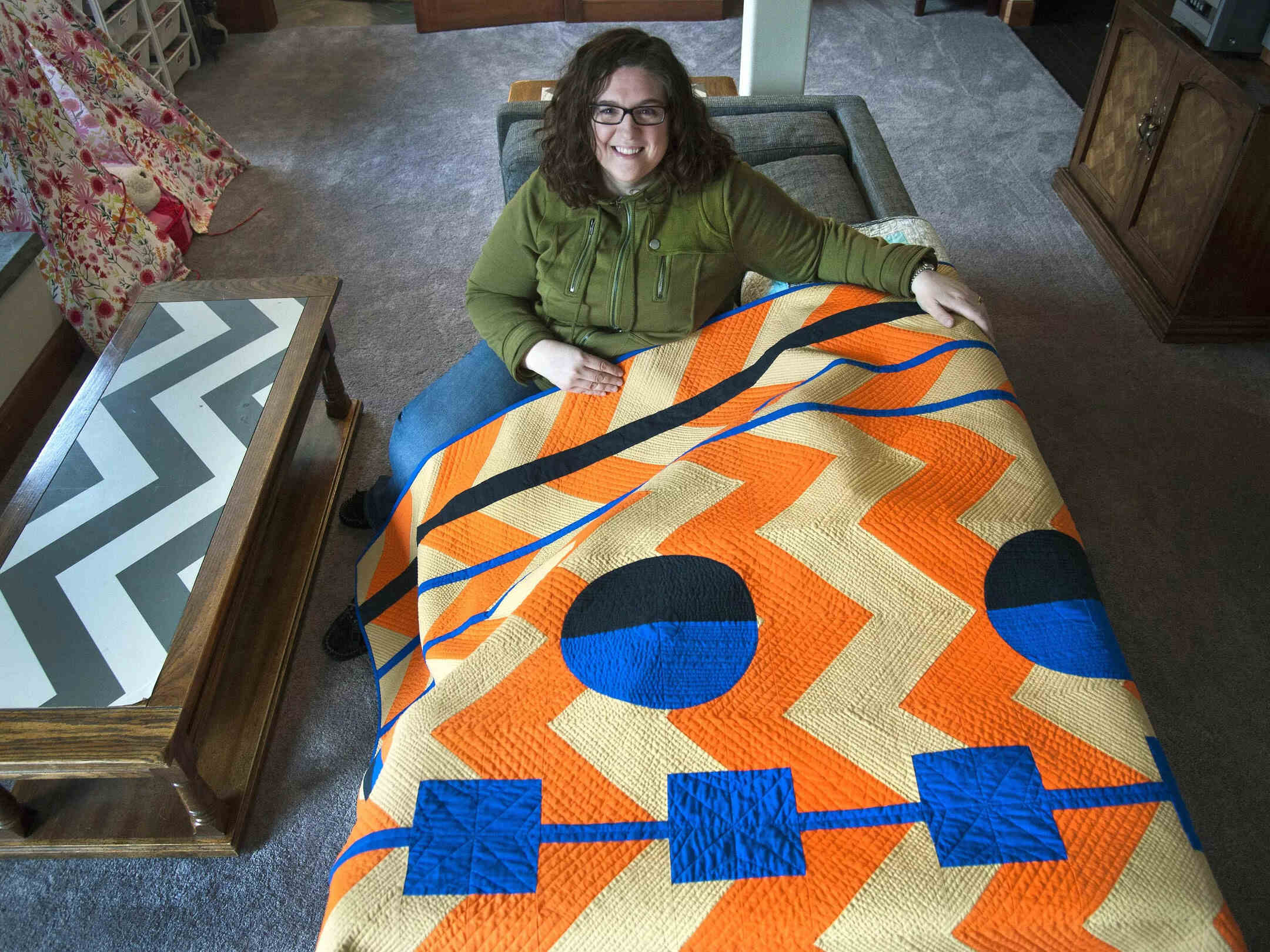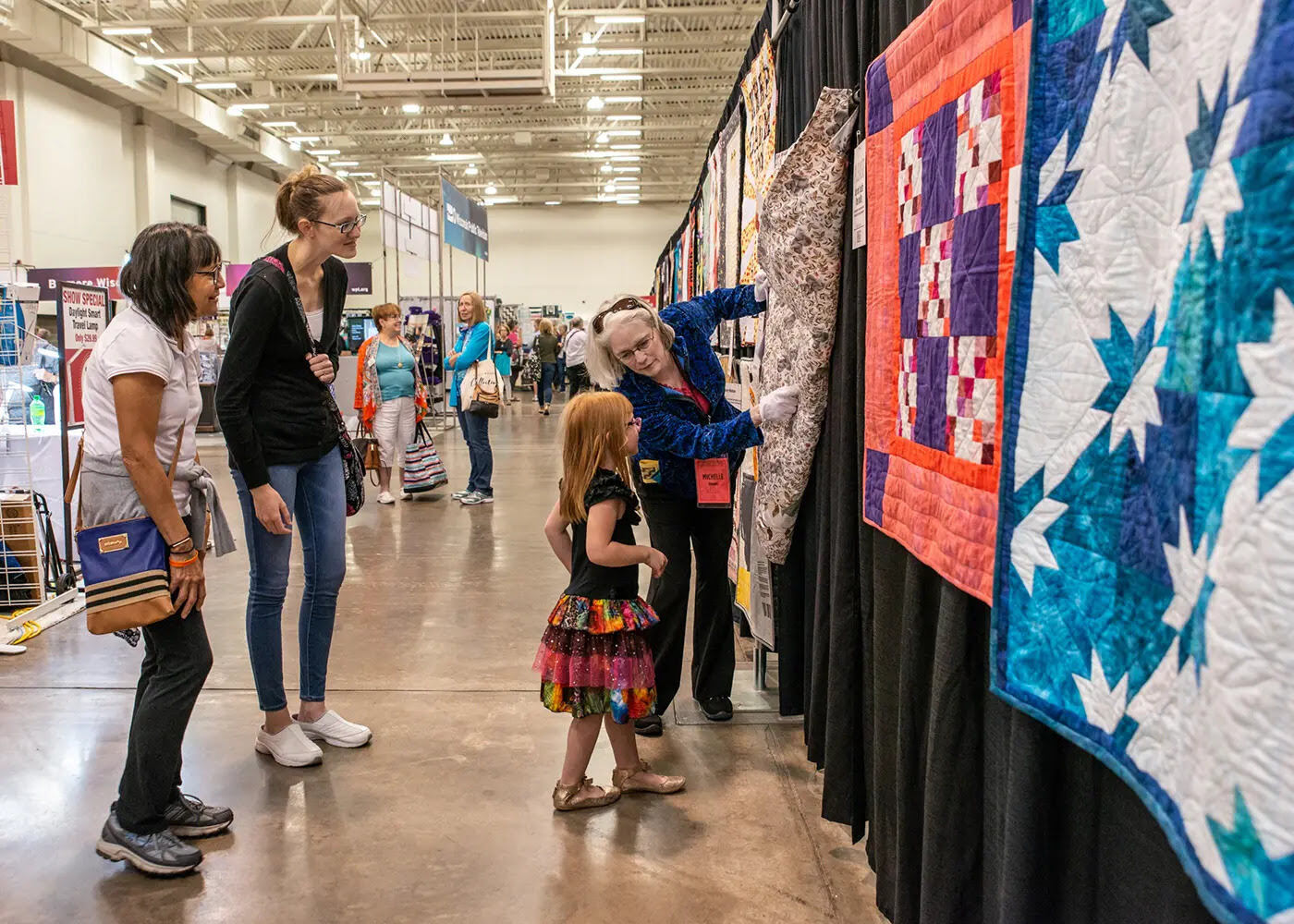Home>Create & Decorate>DIY & Crafts>Easy Quilt Patterns For Beginners: Step-by-Step Guide
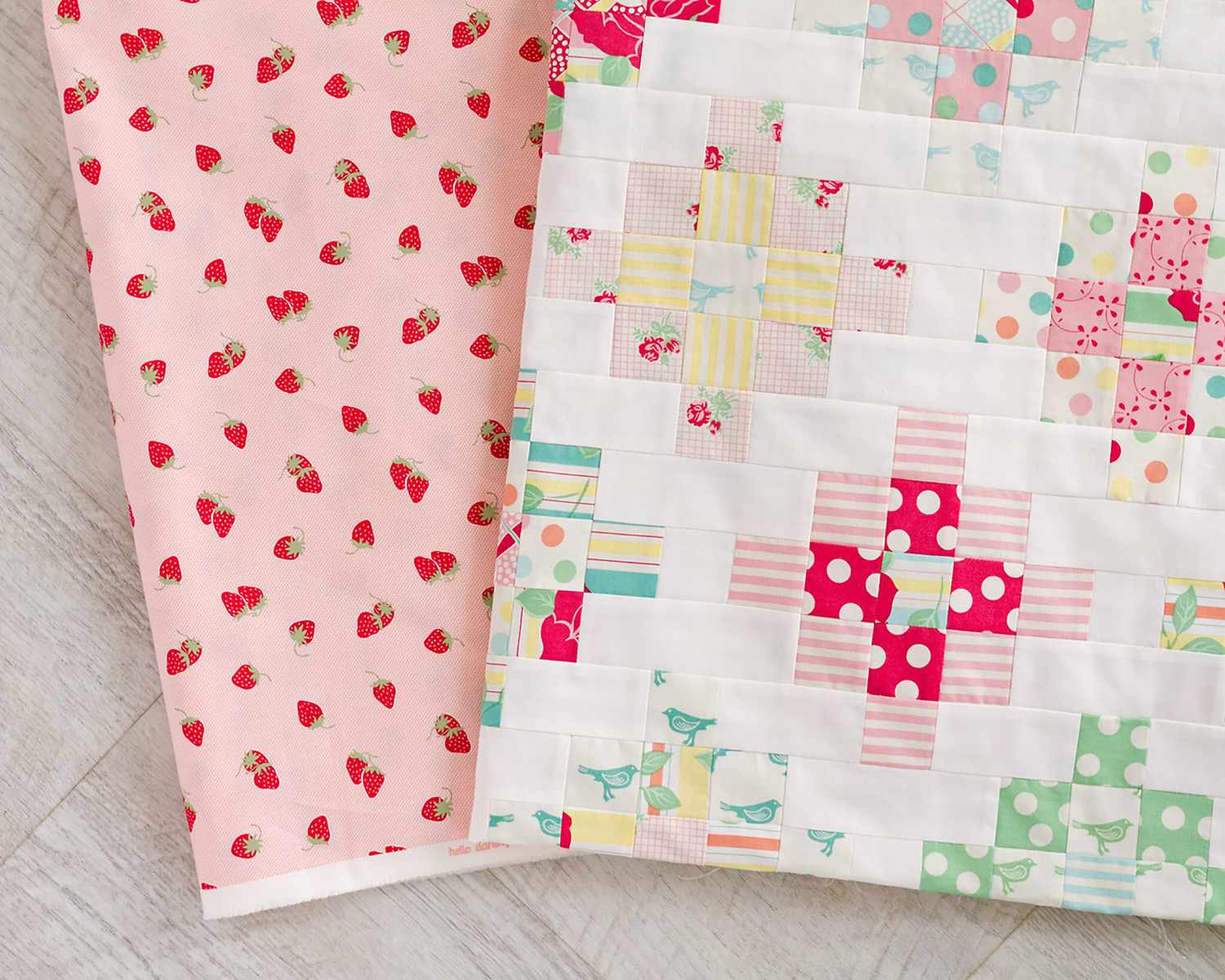

DIY & Crafts
Easy Quilt Patterns For Beginners: Step-by-Step Guide
Published: February 15, 2024

Senior Editor in Create & Decorate, Kathryn combines traditional craftsmanship with contemporary trends. Her background in textile design and commitment to sustainable crafts inspire both content and community.
Discover easy quilt patterns for beginners with our step-by-step guide. Get creative with DIY & Crafts and start quilting today!
(Many of the links in this article redirect to a specific reviewed product. Your purchase of these products through affiliate links helps to generate commission for Twigandthistle.com, at no extra cost. Learn more)
Introduction
Quilting is a timeless craft that allows you to create beautiful and functional pieces of art while expressing your creativity. Whether you're a seasoned crafter or a complete novice, quilting offers a rewarding and enjoyable experience. If you're new to quilting, you might feel overwhelmed by the myriad of patterns and techniques available. However, with the right guidance and a positive attitude, you can embark on this exciting journey with confidence.
Quilting is not just about sewing pieces of fabric together; it's a form of storytelling. Each quilt tells a unique narrative, reflecting the personality and emotions of its creator. From vibrant patchwork designs to elegant, minimalist patterns, the possibilities are endless. As a beginner, you have the opportunity to explore various styles and find your own voice in the world of quilting.
In this comprehensive guide, we will walk you through the fundamentals of quilting, from selecting the perfect fabric to mastering basic quilting techniques. We will also introduce you to easy quilt patterns that are ideal for beginners, providing a solid foundation for your quilting journey. Additionally, we will provide a step-by-step guide to creating your first quilt, ensuring that you feel supported and empowered throughout the process.
By the end of this guide, you will not only have the knowledge and skills to embark on your quilting adventure but also the confidence to experiment and unleash your creativity. Whether you're looking to make a cozy quilt for your home or a heartfelt gift for a loved one, quilting offers a fulfilling and meaningful way to express yourself.
So, gather your enthusiasm and let's dive into the world of quilting, where every stitch carries a story and every quilt is a masterpiece in the making.
Read more: DIY French Door Curtains Ideas
Choosing the Right Fabric
Selecting the right fabric is a crucial step in the quilting process, as it lays the foundation for the overall look and feel of your quilt. As a beginner, navigating the vast array of fabric options can be both exciting and daunting. However, with a few essential tips, you can confidently choose fabrics that complement your design and ensure a successful quilting experience.
Consider Fabric Quality
When choosing fabric for your quilt, prioritize quality. Opt for 100% cotton fabric, as it is durable, easy to work with, and provides a smooth and consistent surface for sewing. High-quality cotton fabric also ensures that your quilt will withstand the test of time, maintaining its color and structure even after multiple washes.
Explore Fabric Designs
Explore a variety of fabric designs, including solids, prints, and blenders. Solids offer versatility and can serve as a foundation for your quilt, while prints add visual interest and personality. Blenders, with subtle textures or patterns, can help tie the different elements of your quilt together. Consider the theme and purpose of your quilt when selecting fabric designs, ensuring that they align with your vision for the finished piece.
Coordinate Colors and Patterns
When coordinating fabric colors and patterns, consider the overall aesthetic you wish to achieve. Whether you prefer a harmonious color scheme or a bold mix of contrasting hues, ensure that the fabrics complement each other. Pay attention to the scale of the patterns, as a balanced combination of small, medium, and large-scale prints can add depth and dimension to your quilt.
Read more: DIY Screen Door Grill Ideas
Pre-Wash the Fabric
Before cutting and sewing your fabric, it is advisable to pre-wash it to remove any excess dyes and shrinkage. This step helps prevent color bleeding and ensures that your quilt maintains its shape and size after completion. Once washed and dried, iron the fabric to create a smooth and wrinkle-free surface, making it easier to work with during the quilting process.
Trust Your Instincts
Ultimately, trust your instincts when choosing fabric for your quilt. Allow your creativity to guide you, and don't be afraid to experiment with different combinations. Whether you're drawn to vibrant, bold colors or subtle, calming tones, your fabric choices should reflect your personal style and artistic expression.
By carefully considering fabric quality, designs, colors, and patterns, you can confidently select the right fabric for your quilting project. Remember that each fabric choice contributes to the narrative of your quilt, allowing you to weave a compelling story through color and texture. With the perfect fabric in hand, you're ready to embark on the next steps of your quilting journey.
Tools and Materials Needed
Quilting, like any craft, requires a set of essential tools and materials to bring your creative vision to life. As a beginner, understanding and assembling the necessary items will set the stage for a successful quilting experience. Here's a comprehensive list of tools and materials you'll need to embark on your quilting journey:
Cutting Tools
- Rotary Cutter: A rotary cutter equipped with a sharp blade allows for precise fabric cutting, making it an indispensable tool for quilters. It enables smooth and accurate cuts, essential for piecing together quilt blocks.
- Cutting Mat: A self-healing cutting mat provides a protective surface for cutting fabric with a rotary cutter. It also features measurements and angles, aiding in precise cutting and trimming.
Read more: DIY Closet Curtain Ideas
Sewing Essentials
- Sewing Machine: While hand quilting is an option, a sewing machine expedites the quilting process, especially for beginners. Look for a machine with basic quilting features and adjustable speed settings.
- Quilting Needles: These needles are designed for quilting, featuring a tapered point for smoothly piercing multiple layers of fabric and batting.
- Thread: High-quality cotton thread in various colors is essential for piecing and quilting. Opt for a neutral color for piecing and consider coordinating or contrasting threads for quilting.
Measuring and Marking
- Quilting Ruler: A clear, non-slip quilting ruler with precise measurements aids in cutting fabric strips and squares accurately. Look for a ruler with 1/4-inch markings for seam allowances.
- Fabric Marking Pen or Pencil: Choose a marking tool that is easily visible on fabric and can be removed or fades over time. This is crucial for marking quilting lines and pattern templates on fabric.
Pressing Tools
- Iron and Ironing Board: A reliable iron and spacious ironing board are essential for pressing fabric and seam allowances. Proper pressing ensures crisp and precise piecing, contributing to the overall quality of the quilt.
Additional Supplies
- Fabric: Select an assortment of high-quality cotton fabric in various colors and designs to suit your quilt pattern.
- Batting: Choose batting based on the desired loft and warmth of your quilt. Common options include cotton, polyester, and wool batting.
- Backing Fabric: The fabric for the back of the quilt should complement the quilt top and provide a cohesive finish.
- Quilt Basting Spray or Pins: These tools are used to secure the quilt layers together before quilting, ensuring smooth and even stitching.
By assembling these essential tools and materials, you'll be well-equipped to begin your quilting journey with confidence and enthusiasm. Each item plays a vital role in the quilting process, contributing to the creation of a beautiful and enduring quilt. With the right tools at your disposal, you're ready to dive into the world of quilting and unleash your creativity.
Read more: DIY Painted Door Ideas
Basic Quilting Techniques
Mastering basic quilting techniques is essential for creating a cohesive and visually appealing quilt. Whether you're a novice quilter or looking to refine your skills, understanding these fundamental techniques will lay a strong foundation for your quilting journey.
1. Piecing
Piecing is the process of sewing together fabric pieces to create quilt blocks. Accurate piecing is crucial for ensuring that the blocks fit together seamlessly. To achieve precise piecing, maintain a consistent 1/4-inch seam allowance throughout the construction of quilt blocks. This uniform seam allowance contributes to the overall stability and symmetry of the quilt.
2. Pressing
Proper pressing is a critical aspect of quilting that significantly impacts the final appearance of the quilt. After sewing seams, pressing the fabric with an iron sets the seam and ensures that the fabric lies flat. Pressing seam allowances in alternating directions for adjacent blocks allows them to nest together, creating crisp and well-aligned intersections when the blocks are joined.
3. Quilting
Quilting refers to the process of stitching through the quilt top, batting, and backing to secure the layers together. There are various quilting techniques, including straight-line quilting, free-motion quilting, and hand quilting. For beginners, straight-line quilting using a walking foot on a sewing machine is a great starting point. It involves stitching parallel lines across the quilt top, creating a clean and modern look.
4. Binding
Binding provides a finished edge to the quilt and secures the raw edges of the quilt layers. Creating binding involves folding and pressing fabric strips, which are then sewn around the perimeter of the quilt. Mitered corners add a polished touch to the binding, giving the quilt a professional appearance.
5. Basting
Before quilting the layers together, basting is necessary to secure the quilt top, batting, and backing in place. Basting can be done using safety pins or quilt basting spray, ensuring that the layers remain smooth and taut during the quilting process.
6. Squaring Up
After quilting, squaring up the quilt involves trimming the excess batting and backing fabric to create an even and straight edge. This step prepares the quilt for binding and gives it a clean and polished finish.
By familiarizing yourself with these basic quilting techniques, you'll gain the confidence and skills needed to embark on your quilting projects. Each technique plays a crucial role in the quilting process, contributing to the overall quality and visual appeal of the finished quilt. As you practice and refine these techniques, you'll find joy in the art of quilting and the creation of beautiful, handmade quilts.
Easy Quilt Patterns
As a beginner in the world of quilting, exploring easy quilt patterns is an exciting way to kickstart your creative journey. These beginner-friendly patterns offer simplicity without sacrificing visual appeal, making them ideal for honing your quilting skills while producing stunning results. Whether you're drawn to classic designs or modern aesthetics, there are numerous easy quilt patterns to choose from, each offering a unique opportunity to express your creativity.
Read more: How to Make a DIY Door Snake
1. Nine Patch Quilt
The nine patch quilt pattern is a timeless favorite among quilters, known for its simplicity and versatility. This pattern consists of nine equally sized squares arranged in three rows of three. By combining contrasting or coordinating fabrics, you can create visually striking designs within each block. The straightforward construction of the nine patch quilt makes it an excellent choice for beginners looking to master precise piecing and seam matching.
2. Rail Fence Quilt
The rail fence quilt pattern is characterized by its straightforward construction and dynamic visual impact. Consisting of fabric strips arranged in horizontal segments, this pattern offers endless possibilities for color and layout variations. As a beginner, the rail fence quilt provides an excellent opportunity to practice accurate cutting and piecing while experimenting with color combinations to achieve captivating designs.
3. Simple Square Quilt
For those new to quilting, the simple square quilt pattern offers a perfect introduction to the craft. This pattern involves arranging fabric squares in a grid layout, creating a clean and modern aesthetic. By playing with color placement and fabric choices, you can infuse personality and charm into this uncomplicated design. The simple square quilt pattern allows beginners to focus on mastering precise cutting, piecing, and pressing techniques while achieving a polished end result.
4. Herringbone Quilt
The herringbone quilt pattern, with its captivating zigzag design, adds a touch of sophistication to beginner quilting projects. While the pattern may appear intricate, its construction relies on the strategic placement of rectangular fabric pieces to create the illusion of interlocking chevrons. This pattern introduces beginners to the concept of creating visually complex designs through simple piecing techniques, making it an engaging and rewarding choice for those eager to expand their quilting skills.
5. Four Patch Quilt
The four patch quilt pattern offers a delightful balance of simplicity and charm, making it an excellent choice for beginners seeking a classic yet approachable design. This pattern features blocks composed of four equally sized squares, providing ample opportunities for creative fabric combinations and layout variations. As a beginner-friendly pattern, the four patch quilt allows for focused practice on seam matching and block assembly, resulting in a delightful quilt with timeless appeal.
By exploring these easy quilt patterns, beginners can embark on their quilting journey with confidence and enthusiasm. Each pattern presents an opportunity to develop essential quilting skills while creating beautiful and meaningful pieces. Whether you're drawn to traditional designs or contemporary aesthetics, these easy quilt patterns offer a delightful introduction to the art of quilting, setting the stage for a fulfilling and rewarding creative endeavor.
Step-by-Step Guide to Making a Quilt
Embarking on the journey of making a quilt is an exciting and fulfilling endeavor. Whether you're creating a quilt for personal use or as a heartfelt gift, following a step-by-step guide can help you navigate the quilting process with confidence and ease. Here's a comprehensive outline to guide you through the creation of your first quilt:
1. Design and Plan
Begin by selecting a quilt pattern that aligns with your skill level and aesthetic preferences. Consider factors such as the size of the quilt, the complexity of the pattern, and the color scheme. Once you've chosen a pattern, gather the necessary fabric, batting, and backing material based on the pattern's requirements.
2. Cutting and Piecing
Carefully cut the fabric pieces according to the pattern's specifications, ensuring precision and accuracy. Assemble the cut pieces into blocks or units as per the pattern instructions, paying attention to seam allowances and pressing the seams for a crisp finish.
3. Arranging the Quilt Top
Lay out the pieced blocks or units to create the quilt top design. Experiment with different arrangements to achieve a visually appealing composition. Once satisfied with the layout, sew the blocks together to form the quilt top, ensuring that the seams align neatly.
4. Adding Batting and Backing
Lay the backing fabric on a flat surface, followed by the batting, and then the quilt top, ensuring that all layers are smooth and free of wrinkles. Baste the layers together using safety pins or quilt basting spray to secure them for quilting.
5. Quilting
Select a quilting technique that complements your quilt design, whether it's straight-line quilting, free-motion quilting, or hand quilting. Begin quilting from the center of the quilt and work outward, securing the layers together with even and consistent stitching.
6. Binding
Create the binding strips by sewing them together and then attaching them to the edges of the quilt. Miter the corners for a polished look, and hand stitch the binding to the back of the quilt for a clean finish.
Read more: How to Build a DIY Closet Rod
7. Finishing Touches
Once the binding is in place, trim any excess batting and backing fabric to create an even edge. Give the quilt a final press to ensure that all the seams and edges are smooth and well-defined.
Following this step-by-step guide will lead you through the process of creating a beautiful and functional quilt. Each stage contributes to the overall craftsmanship and artistry of the quilt, allowing you to witness your vision come to life with every stitch and seam. As you complete your first quilt, you'll gain valuable experience and confidence to embark on future quilting projects with creativity and skill.
Tips for Beginners
As a beginner in the world of quilting, embarking on your first quilting project can be both exhilarating and daunting. To ensure a smooth and enjoyable quilting experience, consider the following tips tailored to support and guide you through your initial endeavors:
-
Start with Simple Projects: Begin your quilting journey with easy and manageable projects that allow you to grasp essential techniques without feeling overwhelmed. Simple quilt patterns, such as the nine patch or rail fence, provide an excellent foundation for building confidence and honing your skills.
-
Invest in Quality Tools: While it's tempting to make do with basic supplies, investing in high-quality quilting tools and materials can significantly impact the outcome of your quilt. A reliable rotary cutter, sharp quilting needles, and a sturdy cutting mat are essential for precise cutting and piecing.
-
Practice Accurate Seam Allowances: Maintaining a consistent 1/4-inch seam allowance is crucial in quilting, as it ensures that the pieces fit together seamlessly. Take the time to practice and perfect your seam allowance accuracy, as it forms the backbone of well-constructed quilt blocks.
-
Embrace Imperfections: As a beginner, it's important to embrace imperfections and view them as part of the learning process. Quilting is a journey of growth, and each project offers valuable lessons that contribute to your development as a quilter. Embrace mistakes as opportunities for improvement and experimentation.
-
Seek Guidance and Resources: Take advantage of the wealth of quilting resources available, including books, online tutorials, and quilting communities. Learning from experienced quilters and seeking guidance from fellow enthusiasts can provide valuable insights and inspiration for your quilting endeavors.
-
Patience is Key: Quilting is a labor of love that requires patience and perseverance. Take your time with each step of the quilting process, from cutting and piecing to quilting and binding. Patient, deliberate work yields beautiful and enduring quilts.
-
Enjoy the Creative Process: Above all, savor the creative journey of quilting. Allow yourself to explore color combinations, experiment with fabric choices, and infuse your personality into each quilt. The joy of quilting lies in the process of creation and self-expression.
By embracing these tips, you'll embark on your quilting journey with confidence and enthusiasm, laying the groundwork for a fulfilling and rewarding experience. As you progress, remember that every stitch tells a story, and each quilt reflects your unique creativity and dedication. Happy quilting!
Conclusion
In conclusion, quilting is a captivating and enriching craft that offers a myriad of opportunities for self-expression and creativity. As we've explored the essential aspects of quilting, from choosing the right fabric to mastering basic quilting techniques and exploring easy quilt patterns, it's evident that quilting is a journey filled with artistic fulfillment and personal growth.
Through the process of selecting fabric, we discovered the significance of quality, design, and color coordination in shaping the narrative of a quilt. The careful consideration of fabric choices allows quilters to infuse emotion, meaning, and visual impact into their creations, transforming simple fabric into compelling works of art.
The exploration of basic quilting techniques illuminated the foundational skills necessary for constructing a cohesive and visually appealing quilt. From precise piecing and pressing to quilting and binding, each technique contributes to the craftsmanship and artistry of the quilt, reflecting the dedication and attention to detail of the quilter.
The introduction to easy quilt patterns provided a gateway for beginners to embark on their quilting journey with confidence and enthusiasm. These accessible patterns not only serve as a canvas for honing quilting skills but also offer a platform for self-discovery and creative expression. Each quilt pattern presents an opportunity to weave a unique story through fabric, color, and design, allowing beginners to explore their artistic inclinations.
Furthermore, the step-by-step guide to making a quilt provided a roadmap for beginners to navigate the quilting process with clarity and purpose. By following a structured approach, beginners can embark on their quilting projects with a sense of direction and accomplishment, culminating in the creation of a beautiful and enduring quilt.
Lastly, the tips tailored for beginners serve as a supportive framework for embarking on the quilting journey, emphasizing the importance of patience, practice, and embracing the creative process. These insights aim to empower beginners to approach quilting with confidence, resilience, and a deep appreciation for the art form.
In essence, quilting transcends the mere act of sewing fabric together; it is a form of storytelling, self-discovery, and artistic expression. With each stitch, quilters imbue their quilts with a piece of themselves, creating timeless pieces that resonate with emotion and creativity. As beginners embark on their quilting journey, they are poised to discover the joy, fulfillment, and endless possibilities that quilting offers, paving the way for a lifelong pursuit of creativity and craftsmanship.

